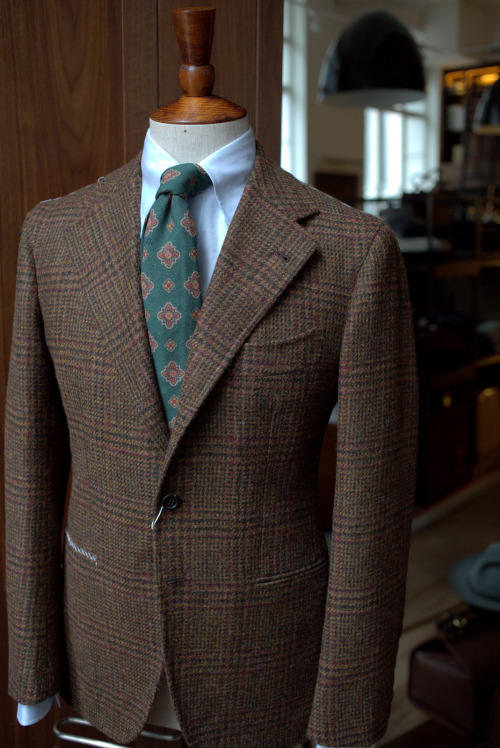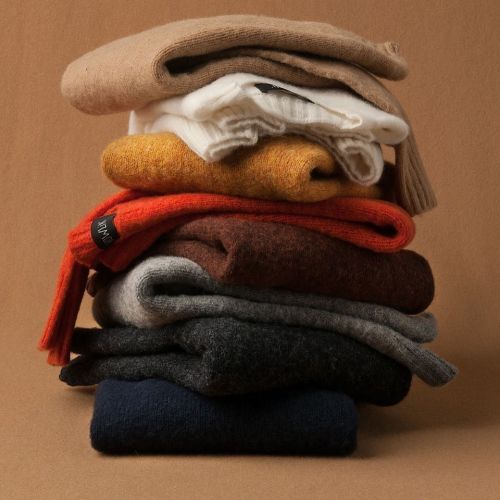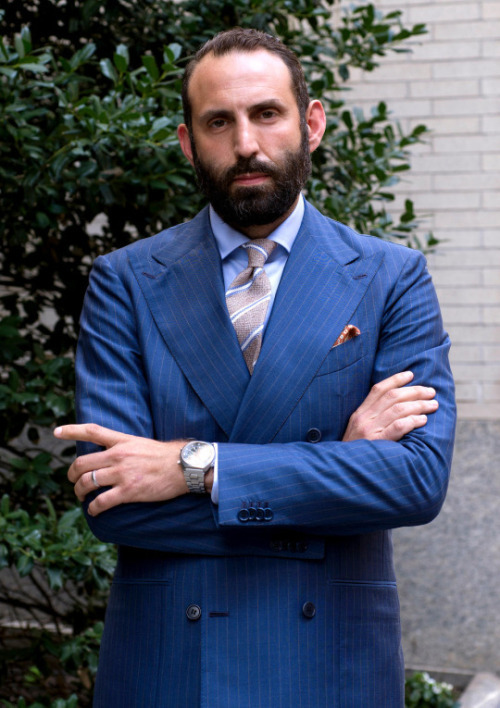
When did you start wearing tweed and flannel on a consistent basis this year? About a generation or two ago, these two robust fabrics would have made their first appearance after Labor Day, which marked the natural end of summer fashion. After all, that was the spirit behind the saying “no white after Labor Day,” a rule so sacred among etiquette hardliners that Patty Hearst’s character was murdered for it as punishment in the 1994 movie Serial Mom. But this year, my autumnal clothes have been dashing in-and-out of my wardrobe, with summer pieces continuing to be useful as late as November. Last month, thirteen US federal agencies released a stunning report saying climate change has already had devastating impacts on our health and economy. On a more superficial level, I can’t help but wonder if it’s also affected our wardrobes – and menswear retailing.
Every year, the traditional concept of four seasons seems increasingly outdated. Scientists have found that, as the planet warms up, the tropics have been expanding 0.1 to 0.2 degrees latitude every decade, so that places that once had four seasons are now shifting to having just two. Vox had an article this week about how global warming could change US cities by the year 2050 (“In some cities, it’ll be like moving two states south”). “You can see that Scranton, Pennsylvania, will have a climate that resembles that of Round Hill, Virginia, today,” they wrote. “That’s a distance of about 220 miles as the crow flies, but it means that Scranton will face average summer peaks that are 4.8°F higher and winter temperature lows that are 5.5°F higher.”
This is happening all over the place, not just in Scranton. In parts of New England, winters have warmed at an average rate of more than 1°F per decade since 1970 — that’s more than 4°F total. Last year, some eastern US cities were beset with summerlike temperatures as early as February. And across the US, winters feel shorter and generally milder, with the transition from cold winter weather to warmer spring temps happening earlier. Alexander Stine, an Assistant Professor of Earth & Climate Sciences at Harvard, says: “Once we account for the fact that the average temperature for any given year is increasing, we find that some months have been warming more than others. Most of the difference is the result of this shift in the timing of the seasons, and a decrease in the difference between summer and winter temperatures.”

This has changed how many men both dress and shop. Tweed season starts later; summer clothes are more relevant year-round. And similarly, our interest in bulky sweaters and heavy outerwear starts much later in the year. Many men don’t shop for a solid winter coat until November, if not December, which for retailers, nearly marks the end of the season, when they’re already discounting.
The traditional tempo for fashion production is rooted in two things. The first is the natural changing of the seasons (people want heavier coats in the winter, just as they need airier shirts in the summer). The second is about the reign of Louis XIV, the monarch of the House of Bourbon who came to the throne in 1643.
Paris has been considered the epicenter of women’s fashion for centuries, but this wasn’t always the case. When Louis XIV took power in the 17th century, the world’s style capital was Madrid. Taste tends to follow power – the rise of the Second British Empire put men in dark worsted suits, just Pax Americana popularized denim and the rebel look. In the 17th century though, it was all about Spain, where the elites wore tight and rigid clothes, often dyed black (which was not only an expensive color at the time, but also considered to be sober and dignified by the Catholic Habsburg monarchy).
During this time, the French mostly imported their luxuries. Their fashion came from Spain, silks from Milan, tapestries from Brussels, and mirrors from Venice. Louis XIV, however, sought to change all that. He started a New Deal program for French luxury. The industries he built around fine furniture, textile, clothing, and jewelry not only provided his subjects with jobs, but also made France a world leader in taste and technology. Louis XIV’s finance minister, Jean-Baptiste Colbert, famously said that “fashions were to France what the mines of Peru were to Spain,” noting the lucrative export opportunities this created for the country. As Kimberly Chrisman-Campbell writes in The Atlantic, it was an unbeatable economic stimulus plan – and it helped set today’s fashion system.
One of Colbert’s most effective and far-reaching innovations was to mandate that new textiles appeared seasonally, twice a year, encouraging people to buy more of them, on a predictable schedule. Fashion prints were often labeled hiver or été for winter or summer, with corresponding props like parasols, face masks, and fans for summer; for winter, there were furs, capes, and muffs for men and women alike. Lightweight silks were reserved for summer; velvet and satin for winter. Due to the changeable French climate, there had always been a certain seasonal rhythm to the textile trade, but now it became formalized and inescapable. Regardless of the weather, the summer fashion season began promptly on Pentecost (the seventh Sunday after Easter; that is, mid- to late-May), with winter clothes donned on November 1, All Saint’s Day. Woe betide the woman who showed up at court in a summer gown on November 2. Other countries took note of the happy economic results of this planned obsolescence and imposed similar seasonal schedules on their weavers.

Fast-forward today and we have a two-season fashion calendar, which is pinned by both consumer needs and a centuries-old production schedule. Most brands offer spring/ summer and fall/ winter collections, with some adding pre-fall and resort lines to boost profits. These collections are displayed at trade shows such as Pitti Uomo and Market Week twice a year, where brands and stores meet to figure out their seasonal buys. Fall/ winter fashion weeks are generally held around January to showcase trends for the upcoming winter. Spring/ summer collections debut in June for the following spring. Showing collections this early allows retailers time to figure out which pieces they want to pick up – and, in turn, designers time to manufacture those orders. (Traditionally, magazines also needed three months to photograph samples and write editorials, although a lot of that has shifted online, where publishing is instantaneous).
It’s easy to see how this can cause confusion. Resort and spring collections start appearing as early as January, when it’s still frigid (I received an email from Our Legacy the other day announcing their “pre-spring” arrivals). Fall merchandise starts dropping in late-July, when it’s still way too warm to wear even a lightweight sweater. And when did you really start shopping for a new winter coat this year? Maybe in the last couple of weeks, just as when retailers are slashing prices? The current seasonal schedule isn’t just out of whack with consumer needs, but it shortens the window of opportunity for stores to capture profits (and sustain themselves).
Todd Barket, co-founder of Unionmade, says the system is antiquated. “Big box retailers have figured it out and they’ll have continuous drops throughout the seasons, so they’re better able to react to the market. But for boutique retailers like us, we’re at the mercy of vendors and designers. Everything is on the old schedule, were you order and pay on six month cycles. If you can afford to get all your products in August, that means you have heavy wool sweaters when it’s still too hot outside. In New York City, it’s like crickets everywhere because no one wants fall clothes until later. Here in San Francisco, I was happy to see summer end earlier than usual, but then suddenly it was like 90 degrees in November – and that’s when we just pulled together our knitwear for merchandising.”

A more ideal system would be one like Zara’s, where production and delivery can be turned around in just one or two months. But Barket notes this isn’t realistic if you want ethical production and niche brands. “An in-season schedule would be much better, but it’s not realistic because designers have to manufacture and they need commitments up-front. Factories simply don’t work that fast. They first produce for the big names before they deal with smaller designers, and if you want something that’s ethically made, it takes time. Zara and can do it because they’re set up that way. They’ll look at a runway show, knock off five pieces, get the design to a factory in China, and have it in-store within two months, before the original designer can even offer it.”
Greg Lellouche, founder of No Man Walks Alone and a sponsor on this site, says the problem isn’t just about the shifting of seasons, but also sale schedules. “As an independent retailer, we’re faced with chronically bankrupt, big retailers slashing prices earlier and earlier each year. That puts us in the cogs of the machine. We should be starting fall winter collections later, not earlier. And starting markdowns when the (climate) season is nearing its end, not when it finally starts,” he says.
“The two issues are intertwined tightly. Because of the rush to be the first to mark down, big retailers are creating pressure on themselves (and their suppliers) to start collections earlier so they have a certain number of full-priced weeks. It’s absurd. The logical response to a shrinking full-price season is not to start selling down jackets in July, it’s to put them on sale later. The whole calendar keeps creeping upwards while we all know that it should be shifting downwards, both for economic and climate reasons.“
For the pragmatic shopper who simply wants to know how to dress, Sid Mashburn suggests being open-minded about how you interpret seasonal fabrics. “I find it’s as much a mental thing as it is about physical comfort,” he says. “I’ll wear linen sport coats as late as October, but if’s a heavy enough linen so it drapes well and comes in a cream-and-brown houndstooth – it’s like, ‘OK, well I can see a tweed in there.’ I also love corduroys and flannels in brighter colors. Even if it’s still cold in April, I won’t want to wear those chunky, wide waled cords, I feel like I’m mentally done with them. But a baby waled, five-pocket cord? I wear those throughout the summer. I think I picked that up from Californians who used to wear those baby-waled OP shorts – you think it’s a fall fabric, but they made it work for California’s warm climate.”
(photos via The Armoury, Unionmade, No Man Walks Alone, and Sid Mashburn)
